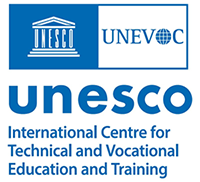
The UNESCO-UNEVOC International Centre: Who We Are | What We Do | Working With Us | Get in Touch
The UNEVOC Network: Learn About the Network | UNEVOC Network Directory
For Members: UNEVOC Centre Dashboard
Thematic Areas: Inclusion and Youth | Digital Transformation | Private Sector Engagement | SDGs and Greening TVET
Our Key Programmes & Projects: BILT: Bridging Innovation and Learning in TVET | Building TVET resilience | TVET Leadership Programme | WYSD: World Youth Skills Day
Past Activities: COVID-19 response | i-hubs project | TVET Global Forums | Virtual Conferences | YEM Knowledge Portal
Our Services & Resources: Publications | TVET Forum | TVET Country Profiles | TVETipedia Glossary | Innovative and Promising Practices | Toolkits for TVET Providers | Entrepreneurial Learning Guide
Events: Major TVET Events | UNEVOC Network News
TVET System
The Republic of Korea is a shining example of how TVET can fuel stellar economic growth. While no model should be emulated, the South Korean experience offers key lessons. First, the government took a sequenced approach to education. Money didn’t start flowing into TVET until the country nearly achieved universal primary education. By design or accident, major investing began in the early 1980s, just as labour shortages started to pinch the economy. To make the “big push” into export-oriented manufacturing, construction and service-oriented sectors, the country needed a new stream of skilled workers.
At the same time, policy-makers in the Republic of Korea were beginning to be alarmed by a growing appetite for higher education. People would become “over-educated”, expecting white collar jobs in an economy thirsting for new sources of skilled labour. By expanding TVET, the government planned to satisfy its forecasted labour needs while reducing pressure on universities to enrol more students.
Today, about 40 per cent of secondary students are enrolled in TVET. Yet it is still perceived as a second-class education. So the government is trying to open pathways to higher education. First, TVET students are now getting a healthy dose of academic subjects so that they can apply to university. In some schools, academic and vocational students share as much as 75 per cent of a common curriculum. The government is also channelling public and private investment into new post-secondary training institutes to kill the myth that TVET is an academic ‘dead-end’.
The ultimate challenge lies in keeping abreast with technological change. To keep curricula relevant, the plan is to tighten links to the private sector. For example, the Republic of Korea is now experimenting with their own version of Germany’s famous "dual system", which traces its roots back to post-war reconstruction. It is opting for a “2+1” programme, combining two years of classroom studies with a year of apprenticeship.[1]
Reference
TVET Institutions